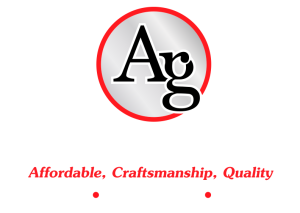5 TIPS FOR DIY HOME PAINTING
There are different things you can do if you have DIY home improvement project in mind. Perhaps, to bring out the reality of every home improvement, you can paint your walls, cabinets, ceilings, and furniture. However, hiring a professional like Argenta painting in Vancouver, BC, is the best option. Also, if you have a suitable leisure time, you may consider DIY painting to improve some portions of your home.
Though painting is one of the most practiced major do-it-yourself (DIY) home renovation projects, even a novice can complete it without much investment. It’s also a technique that will allow homeowners to brighten up their interior or exterior walls with some practice, but it requires some competencies.
Tips for DIY Home Painting
The five professional home painting tips are below while saving money while achieving a colorful home improvement painting. All you have to do is choose the correct color to complement your decor. You’ll become proficient once you think like a professional home painter. With these tips will help your DIY home project look that it was done by a professional.

Good Planning
Before you begin any DIY home painting project in Vancouver, BC, make a list of all the materials you’ll need, including a gallon of paint for every 400sft. For an average-sized room, two gallons are necessary. Also, you can estimate your needs by calculating the height by the length and adding proportionately.
However, color uniformity is an excellent factor. To achieve this painting without getting it messy, you’ll need primer, a pouring spout, a screen, a tape measure, a stirrer, a screwdriver, a roller, and plastic sheeting to cover furniture or other painted area. It would help if you also planned for time management. Taking your time will make you have a high-quality result.
Prepare the Walls
First, wipe down your walls with a sponge to eliminate any dust or debris accumulated. You might also wonder why you need to prime your walls before painting. Primer serves as a sealant for a surface, making it easier to apply and adhere to the first layer rather than the drywall itself.
Adding a primer will smooth out any repair materials and allow the paint to grip firmly, especially if your walls have never been painted or for several years.
The use of primer can help distinguish between a novice and a professional appearance. It provides additional benefits as it makes your painting long-lasting and professional. The correct preparation is essential for any professional job or DIY home painting project.


Stick to a Systematized Routine
When painting, professional painters follow a systematic procedure that begins with the trim and progresses to the ceilings and walls—simplicity, speed, and tidying up your work. Following the stages in Vancouver, BC becomes second nature as you paint. Using blue painter’s tape on the trim rather than creating a more extensive work zone around the walls is also easier.
So, you don’t need to be an expert in applying these systematic routines. Actually, this will make you DIY home painting project a lot easier. Painting on the walls isn’t a huge problem. Allow the trim to dry for twenty-four hours to move on to other rooms or outdoor locations. You can start painting the ceilings from the beginning, giving each time to dry as you work in the same direction as the trim. Then you can begin priming each wall in that order.
If you miss this approach, you may likely make costly mistakes, damage the painted area, or smudge your paint.
Steps before Removing the Paint Tape.
Applying the painter’s tape is critical, but removing it is equally so because a minor error will result in a new paint coat. Please make sure the paint is dried before releasing it to make it seem and feel like a professional job.
Always verify the manufacturer’s instructions for leaving your painting tape in place. As a general rule, you should remove it once the painting dries completely. Also, the tape will keep the area from drying out or becoming rigid. If left on the paint for too long, it will peel off or leave uneven lines. You must also progressively remove it from the body at a degree angle.
If tape residue remains on the surface after the paint has dried, gently remove it with a damp sponge and a little soapy cleanser. DIY home projects might be intimidating but the use of tape will make the job a lot easier.


Choosing Between Plastic and Canvas Drop Cloths
When it comes to DIY painting home improvement projects, the cost is sometimes a problem, but skimping on supplies is a mistake that can result in significant repair costs.
If you choose between plastic and canvas drop cloths, go with the canvas to protect your home, carpets, hardwood floors, and furniture far better.
Remember that substantial paint spills can seep through the canvas, so don’t keep it too long. The good news is that you may use it in many projects.
Your DIY home painting project can be fun and easy and it really enhance the beauty of you home its done correcly. As professional we love to share the secrets that have helped us to increase productivity in our painting projects. If any further questions arise during your project please check out this video where we share more tips on how to make painting fun and easy “Watch this Before you Start your DIY Painting Project“.
Call A Professional
Are you ready to jump from novice to expert using these five DIY home painting tips? The more you practice, the better you will get for home improvement projects. If you encounter any problem in the adventure of DIY painting, do not hesitate to call Argenta painting for a rescue mission.


